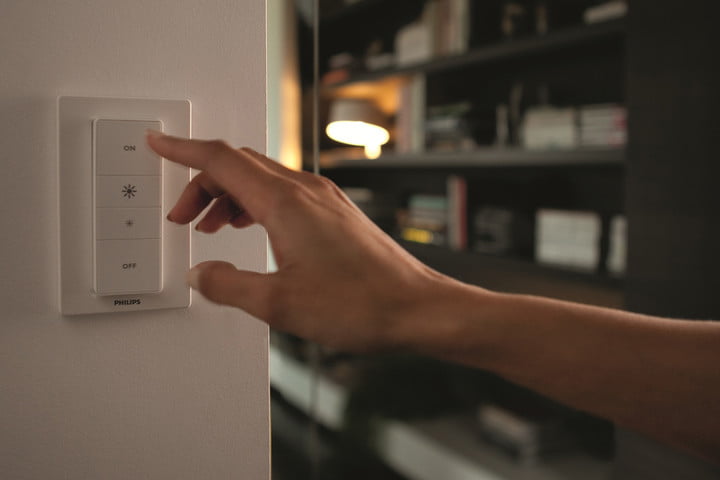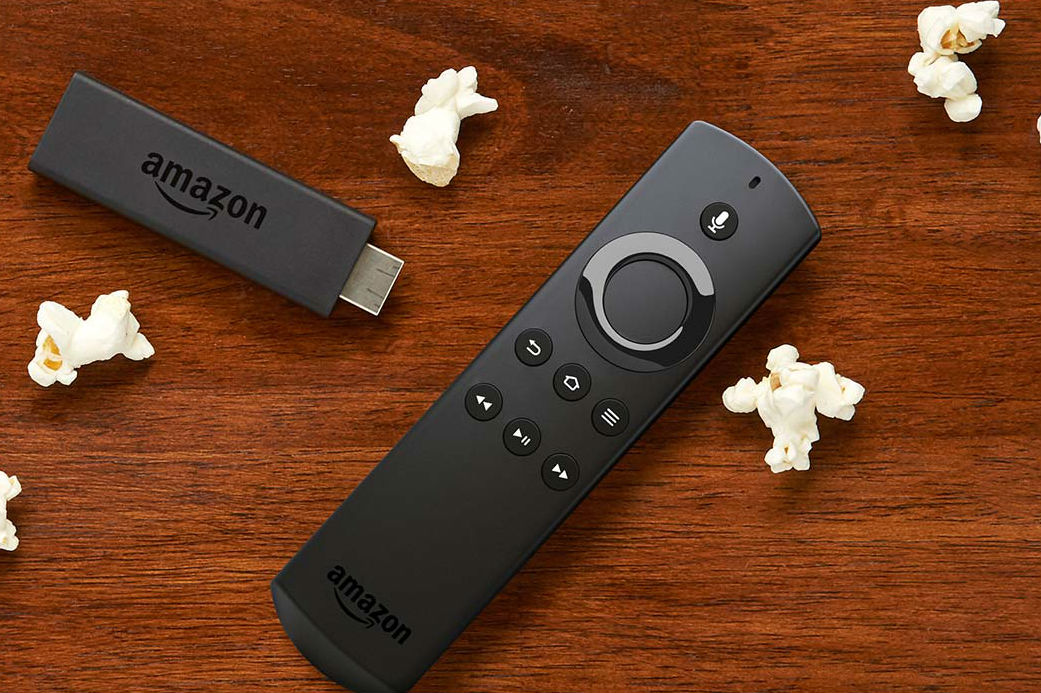Apple TV and Amazon Fire TV Stick are two solutions for delivering streaming content such as Netflix, Hulu, and Amazon Video to your television. Both media streaming devices also let you download apps and games to supplement your experience … but which option is best? We look at both the Apple TV and the Amazon Fire TV Stick to find out which would best fit your home theater, movie nook, or bedroom television. Depending on whether you are looking for an elevated gaming experience or just a way to binge-watch the latest shows and blockbusters, your perfect solution may vary.
Are you looking for TV devices that can stream content in 4K HDR? This article features Apple and Amazon’s entry options for home theatre setups, which provide content in 1080p Full-HD. For more information about each company’s 4K offering, be sure to check out our reviews of the Apple TV 4K and Amazon Fire TV Stick 4K.
User interface

Both Apple and Amazon have had enough time to present polished interfaces, and neither offers a painful experience; both media devices let you get to your favorite content quickly, without digging through endless menus. Apple presents a standard Home Screen filled with rectangle-shaped apps that can be arranged however you wish, while Amazon uses a tile system that changes based on your most recently used apps and its recommendation engine. If you prefer a bit of order, you may feel more at home with Apple’s app layout as you remain in control completely; that said, we also appreciate the more personalized experience that Amazon offers on its devices.
When it comes to navigation, both Apple TV and Amazon Fire TV Stick offer voice assistants, Siri and Alexa. The quickest way to navigate these interfaces is to call up the provided voice assistant and use your voice to begin a search; you can also manually browse through content via the provided remotes, which we will discuss shortly. Overall, both interfaces are clean and easy to navigate. That being said, we do need to penalize Amazon for is its inclusion of advertisements throughout its home menus; Apple TV inserts no such ads for a less intrusive experience.
Winner: Apple TV
Remote control

If you’ve ever picked up an Apple TV remote, you might already be aware of where this conversation is headed. Apple’s touch-sensitive Siri Remote is an icon of the industry, but unfortunately, it isn’t well-liked. Apple uses a touch surface that allows you to scroll and flick through the TV’s menus, but the sensitivity and overall design have been touted as challenging to use. On the flip side, Amazon provides a more standard remote design with a tactile circle that acts as a directional pad. Most people will find it easy to use immediately.
Both Amazon and Apple remotes can also control essential functions such as media playback and volume. Additionally, Amazon features an Alexa voice button on its Fire TV Stick remote, while Apple features a Siri button. Neither remote provides a much-desired function: backlighting. We appreciate Apple’s future-forward ingenuity, but the Fire TV Stick remote wins the battle any day when it comes down to a pleasurable experience.
Winner: Amazon Fire TV Stick
Games and apps

Nearly the entirety of your media streaming box experience will be spent within available apps, and both Apple TV and Amazon Fire TV Stick provide dedicated stores so you can add on new features and experiences with a few clicks. Comparing two app catalogs is tricky: We’ve found that both the Apple TV App Store and Fire TV App and Games section provide most staples, including Prime Video, Netflix, Hulu, ESPN, YouTube, Disney+, and Sling TV. The significant difference is that the HBO Max app is not available on any Fire TV devices due to a disagreement between HBO and Amazon — although there are a few workarounds to follow.
Both Apple TV and Amazon Fire TV Stick offer games for download, but wade in and you’ll see that Apple TV quickly takes the cake. For starters, the games available within the Apple TV App Store are of objectively better quality, and the company even offers a monthly gaming subscription known as Apple Arcade. Additionally, games run significantly smoother on Apple TV thanks to its internal Apple A8 chip versus the Fire TV Stick’s lower-powered quad-core ARM 1.3 GHz offering. While you’ll find a large selection of apps on both platforms, it’s hard to deny that Apple TV is a better option for anyone planning on doing a bit of gaming.
Winner: Apple TV
Smart Home

Apple TV and Amazon Fire TV Stick both allow for the control of smart home devices; Apple supports its HomeKit standard, and the Fire TV Stick can control any Alexa-compatible devices. Both Apple TV and Fire TV Stick can also receive video from supported smart cameras so that you can take a peek to see what’s happening in the nursery or who’s at your front door. If you already own smart home gear, you’ll want to base your decision on whether you have Alexa or HomeKit compatible smart devices in your home. That said, the volume of devices supporting Apple’s HomeKit is still woefully limited, while the enormous list of Alexa-compatible gadgets and gear could fill a Best Buy. If you’re thinking your TV might make a good smarthome hub — and make no mistake, it will — Apple simply doesn’t compete.
Winner: Amazon Fire TV Stick
Casting and mirroring

If you want to share content on your phone or tablet, you can do so with either the Apple TV or Amazon Fire TV Stick. Apple offers AirPlay, allowing any iOS device to share its screen. Sadly, Apple TV doesn’t play nicely with non-Apple devices, so you won’t find yourself connecting your Android smartphone any time soon. Amazon Fire TV Stick plays a similar card, supporting screen mirroring from Android devices, and not iOS and MacOS options. If you want to share content on your television, you’ll want to pick the media streaming box that supports the smartphone and tablet devices you’re already using.
Winner: Tie
Video and audio quality

When it comes to video quality, both the Apple TV and Amazon Fire TV Stick are nearly head to head. Both media streaming boxes can deliver 1080p content up to 60 fps, and neither supports more advanced color standards such as HDR. When it comes to audio, Apple TV has a slight edge as it supports up to Dolby 7.1 Surround Sound. Amazon Fire TV Stick supports up to Dolby 5.1 Surround Sound, only allowing 7.1 as a pass-through option. Additionally, as both devices deliver high definition content, you’ll be connecting with an HDMI cable.
If you’re looking for 4K media streaming options with HDR support, you may want to look at Apple and Amazon’s higher-end solutions, the Apple TV 4K and Amazon Fire TV Stick 4K. Otherwise, when it comes to quality, the Apple TV and Amazon Fire TV Stick tie in video, and Apple slightly pulls ahead in audio thanks to its Dolby 7.1 Surround Sound support.
Winner: Apple TV
Value

Amazon Fire TV Stick comes in at an affordable $30, making it an easy purchasing decision for any television. Apple TV, on the other hand, is a bit more difficult of a sell. If you want to pick up an Apple TV, you’ll need to shell out $150 for the privilege. Don’t lose the Siri remote either, as the replacement will cost you $60. Oddly enough, Amazon’s Fire TV Stick remote will cost you the same price as the media streaming stick, $30, if it needs to be replaced. No matter which device you prefer, Apple TV costing 5x more than the Fire TV Stick is a hard truth to swallow.
Winner: Amazon Fire TV Stick
Overall Winner: Amazon Fire TV Stick

If it wasn’t for the Apple TV’s higher price, the winner of this battle might have been different, but Apple’s decision to charge $150 with Amazon’s Fire TV Stick costing only $30 is impossible to ignore. If you want to watch your favorite shows and movies, the Fire TV Stick will likely be the best option. However, we will openly admit that Apple’s ultra-smooth ad-free interface is highly desirable and that kids (and adults) will have a blast with the available games.
In the end, the best choice will likely be based on what smart home gear you own and whether or not you live in the Android ecosystem, best suited for Fire TV Stick, or the Apple ecosystem, best suited for none other than the Apple TV.


